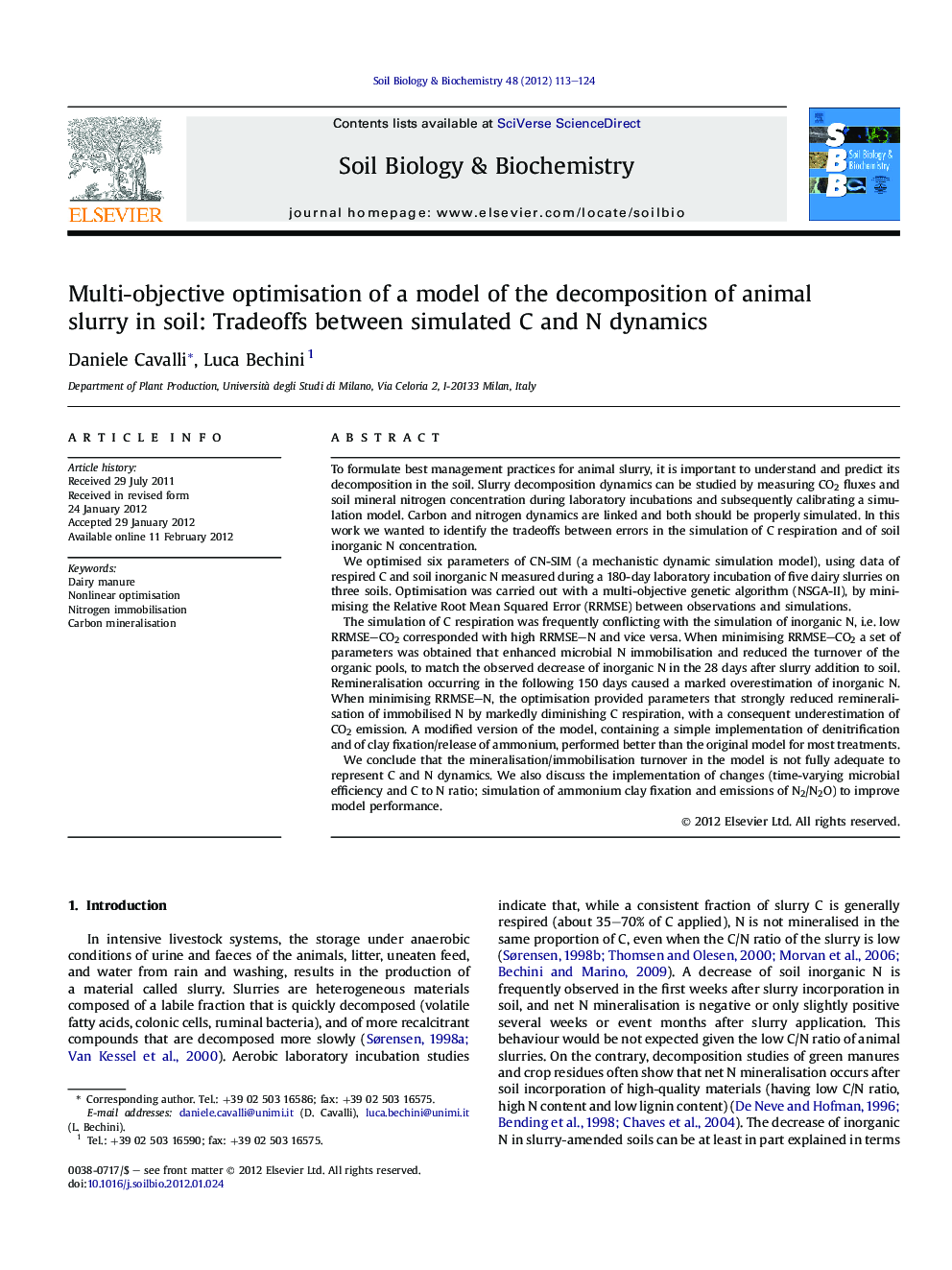| Article ID | Journal | Published Year | Pages | File Type |
|---|---|---|---|---|
| 2024940 | Soil Biology and Biochemistry | 2012 | 12 Pages |
To formulate best management practices for animal slurry, it is important to understand and predict its decomposition in the soil. Slurry decomposition dynamics can be studied by measuring CO2 fluxes and soil mineral nitrogen concentration during laboratory incubations and subsequently calibrating a simulation model. Carbon and nitrogen dynamics are linked and both should be properly simulated. In this work we wanted to identify the tradeoffs between errors in the simulation of C respiration and of soil inorganic N concentration.We optimised six parameters of CN-SIM (a mechanistic dynamic simulation model), using data of respired C and soil inorganic N measured during a 180-day laboratory incubation of five dairy slurries on three soils. Optimisation was carried out with a multi-objective genetic algorithm (NSGA-II), by minimising the Relative Root Mean Squared Error (RRMSE) between observations and simulations.The simulation of C respiration was frequently conflicting with the simulation of inorganic N, i.e. low RRMSE–CO2 corresponded with high RRMSE–N and vice versa. When minimising RRMSE–CO2 a set of parameters was obtained that enhanced microbial N immobilisation and reduced the turnover of the organic pools, to match the observed decrease of inorganic N in the 28 days after slurry addition to soil. Remineralisation occurring in the following 150 days caused a marked overestimation of inorganic N. When minimising RRMSE–N, the optimisation provided parameters that strongly reduced remineralisation of immobilised N by markedly diminishing C respiration, with a consequent underestimation of CO2 emission. A modified version of the model, containing a simple implementation of denitrification and of clay fixation/release of ammonium, performed better than the original model for most treatments.We conclude that the mineralisation/immobilisation turnover in the model is not fully adequate to represent C and N dynamics. We also discuss the implementation of changes (time-varying microbial efficiency and C to N ratio; simulation of ammonium clay fixation and emissions of N2/N2O) to improve model performance.
► The model CN-SIM was optimised to simulate measured C and N dynamics of dairy cow slurries. ► The simulation of respired C was conflicting with the simulation of soil mineral N. ► Low errors of C respiration were obtained through high N immobilisation and remineralisation. ► Good N simulations were achieved by exaggerated recalcitrance of organic matter. ► Sinks of N other than microbial immobilisation could help matching initial N decrease.
